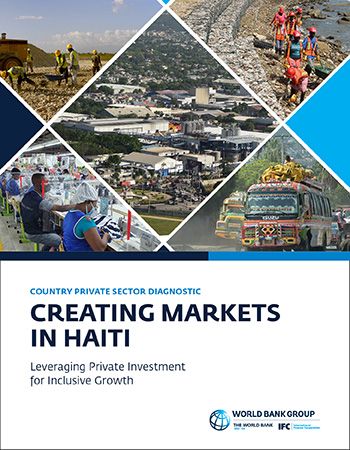Leveraging Private Investment for Inclusive Growth
Recent trends in investment in Haiti indicate untapped opportunities for harnessing the contribution of the private sector for service delivery. Growing economies of scale fostered by Haiti’s rapid urbanization rate and increased mobile uptake have attracted private investment in new areas of the economy, such as digital financial services (e.g., e-wallets), renewable energy (e.g., minigrids and pay-as-you-go systems), and water supply (e.g., affermage contracts). The country’s export-oriented apparel sector, the main formal employer, is also positioned to continue to attract private investment and create jobs. In a cost-sensitive industry, Haiti has competitive advantages such as duty-free quota access to the United States, its relatively low cost of labor, and speed to the US market.
This Country Private Sector Diagnostic (CPSD)—a joint World Bank-IFC tool—aims to provide concrete recommendations for crowding-in private investment in these key sectors of the economy. The timing of the CPSD is opportune, as the economy continues to grapple with an ongoing sociopolitical crisis, amplified by the COVID-19 impact on key industries like tourism and apparel. Decision makers are seeking workable entry points to reform the system to create more and better economic opportunities at a time of mounting socioeconomic frustration.
The CPSD’s recommendations aim to inform the government’s response to support firm resilience and recovery. In the energy sector, the CPSD recommends reducing market risk for private investors by providing estimates of the potential for solar and hybrid mini-grids in the commercial and industrial sector, starting with industrial parks and free zones. The water sector can benefit from the adoption and use of off-grid solar pumps and mobile payments. Digital financial services for SMEs could grow with stronger interoperability of payment systems and the promotion of new financial products, following the example of the nascent leasing market in Haiti. Whereas the apparel sector should seek to maintain existing producers, while attracting new investors and buyers, taking advantage of the growing interest in nearshoring to the United States.
Download
